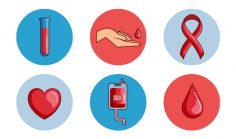Depression is an umbrella term used to describe conditions that are characterized by long-term mood irregularity and/or sadness. There are several types of depressive disorders. These are:
- Major depression (the most common form of depression)
- Persistent depressive disorder
- Manic depression (Bipolar disorder)
- Psychotic depression
- Seasonal affective disorder
- Postpartum depression
People who suffer from all types of depressive disorders can experience persistent feelings of sadness, loss of interest, fatigue, and are at a higher risk for debilitating physical ailments such as heart disease, obesity, and stroke. Depressive disorders can change thought patterns, behavior, physical appearances, and interfere with marriages, relationships with family and friends, and performance in the workplace.
Depression affects women almost twice as often as men – 1 in 5 women will be affected by depressive disorders during their lifetime, compared to 1 in 10 men. Among the most famous depression sufferers are Angelina Jolie, Owen Wilson, Uma Thurman, and Cheryl Crow. Though such a large number of Americans are affected by depression, only few will receive treatment. Over 80% of people experiencing symptoms of clinical depression do not seek help for their condition
According to the Centers for Disease Control, an estimated one in 10 U.S. adults suffers from depression, a mental illness that can adversely affect the course and outcome of common chronic conditions, such as arthritis, asthma, cardiovascular disease, cancer, diabetes, and obesity. Depression also can result in increased work absenteeism, short-term disability, decreased productivity, and suicide. The American Association of Suicidology reports that if left untreated, depression can lead to co-morbid mental disorders such as alcohol and substance abuse, higher rates of recurrent episodes, and higher rates of suicide.
The World Health Organization (WHO) estimates that by the year 2020, depression will be the number two cause of “lost years of healthy life” worldwide. The most recent data compiled by the Centers for Disease Control, from 1988–1994 through 2005–2008, shows that the rate of antidepressant use in the United States among all ages increased nearly 400%. About one in 10 Americans aged 12 and over takes antidepressant medication. Antidepressants were the most frequently used prescription drugs by persons aged 18 to 44 years and the third most common prescription drug taken by Americans of all ages in 2005–2008.
In addition, the CDC reports that only about one-third of people with severe depressive symptoms take antidepressant medication. The U.S. Preventive Services Task Force recommends that health-care providers screen adults for depression when programs are in place to ensure that accurate diagnosis and effective treatment can be provided with careful monitoring and follow-up. The Task Force on Community Preventive Services recommends collaborative care, an approach that involves the collaboration of primary care providers, mental health specialists and other providers to improve disease management for adults with major depression on the basis of strong evidence of effectiveness in improving short-term depression outcomes.













